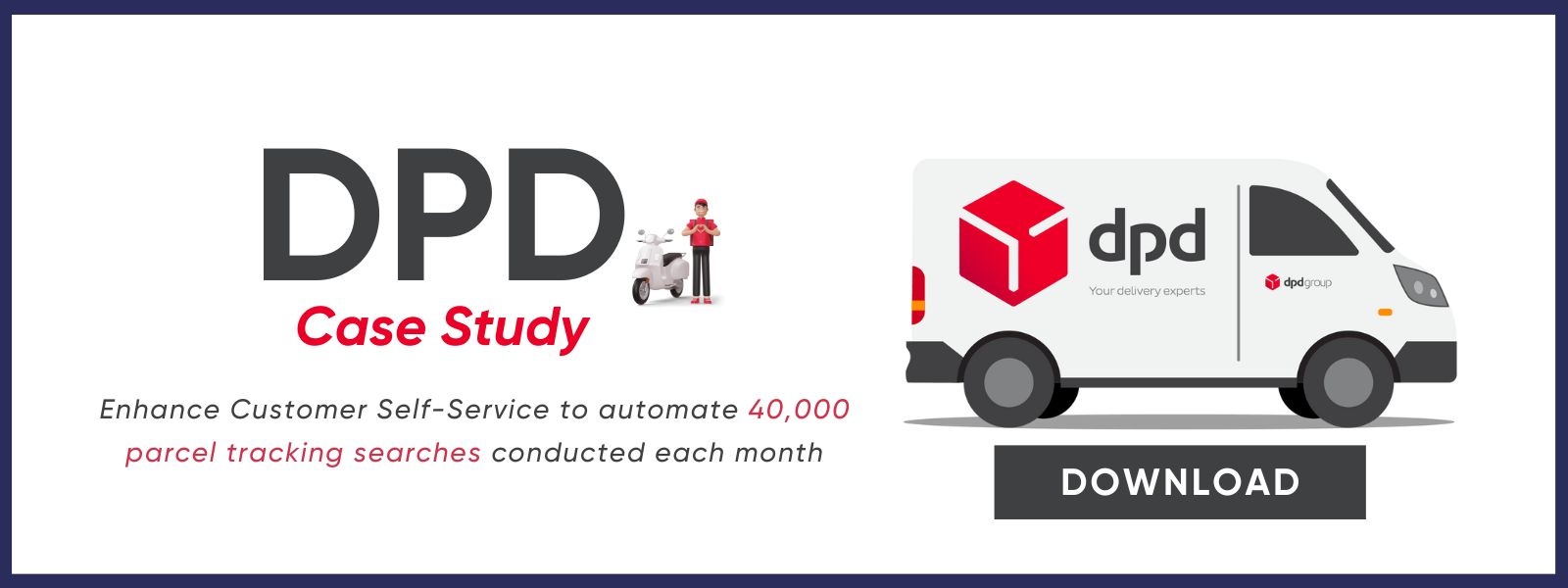
On MAY 18, 2021
Bring Your E-commerce Customer Service Into the Digital Age
If you’ve found yourself doing a lot more shopping online over the past year, you’re not alone. As the COVID-19 pandemic continues to jostle different parts of the world in different ways, many consumers have had no choice but to spend a lot more time online, whether to shop or otherwise. Digital interactions have, therefore, become the new norm across the board. And this has put a strain on customer service teams in virtually every business sector because digital-first consumers expect ‘instant gratification’ at all times.
We know that customer expectations are higher than ever before. Many people won't even do business with a brand again after having a single negative customer service experience. But your brand doesn’t have to suffer this same fate if you take the time now to bring your e-commerce customer service into the digital age with customer self-service solutions.
Today’s e-commerce retailers have a lot of pain points
Pandemic or no pandemic, the world of e-commerce has evolved rapidly over the last few years. And this has created a number of new and ongoing growing pains across the industry as a whole. Here’s a quick rundown of the biggest pain points faced by many e-commerce retailers:
- Outdated customer service offerings: If you’re leaning on your call center to field all customer inquiries or making your customers wait hours (if not days) to receive a response to their email, then you haven’t adapted your customer service offerings to align to how today’s consumers engage with brands. When customers want help or need information, they want it, fast—and they want to be able to access that information on any device and on the channels they use frequently, like text and chat. Succeeding in e-commerce customer service today essentially means meeting your customers wherever they are along their purchase journey. Anything less is a missed opportunity.
- Hard-to-find or missing information: Before reaching out to customer service, your customers will likely scan your website to find the information they need. Whether it’s to research product details or access simple FAQ information, like shipping details or return policies, if that information is hard to find or non-existent altogether, they’re going to get frustrated. Why? Because you’ve basically forced them to reach out to customer service for help when they would have ordinarily liked to find that information on their own. This simply creates a bad customer experience overall, one that’s not likely going to keep your customers coming back for more.
- Subpar conversion rates: Average e-commerce conversion rates across various industries, product categories, and even countries are pretty dismal. Once a customer lands on your website, your number one priority should be to guide them towards some sort of conversion-based activity. But if your website doesn’t do enough to help them move along the purchase journey—by providing them with real-time information to keep them from bouncing or, even worse, checking out your nearest competitor—then conversion will be an uphill battle. Even more, as consumer behaviours evolve, the dynamics around on-site conversion must adapt and change, too.
- Shopping cart abandonment: This goes hand-in-hand with the point about conversion above. What’s even more frustrating about this, however, is that you managed to get customers really close to making a purchase. But something about the digital customer experience got in the way. Or they got distracted by something else and forgot to complete their purchase. There are a number of reasons why this happens—and it can vary a lot from one brand to another—but it doesn’t make this any easier to accept. Either way, knowing that the global average shopping cart abandonment rate hovers around 76% means that this is a big problem for all brands regardless of industry.
- Increased competition: Whether you’re the industry leader or disrupting the market as an up-and-coming startup, you’re likely competing for the same customers and their long-term loyalty, too. But in today’s digital age, with information so easily accessible across different platforms, channels, and devices, brand loyalty becomes quite fleeting. And with a tremendous amount of competition on the basis of price, features, quality, customer service, and more, consumers have a lot of choice—they’re insanely quick to jump ship the minute they see a new, shiny object. Brand loyalty just isn’t what it used to be, which means e-commerce retailers have to work even harder to keep their customers happy and loyal.
- Seasonal overload: Busy shopping seasons, like the now drawn-out holiday shopping period, not only drive a lot more sales but also lead to a lot more customer enquiries. This can quickly cripple a customer service team’s ability to respond to customer needs quickly and effectively, which can also contribute to a negative customer experience.
The benefits of upgrading your e-commerce customer service
In spite of the ongoing pain points that the e-commerce industry continues to face, there are nonetheless a number of ways that retailers can upgrade the e-commerce customer service experience, with the help of customer self-service solutions, to turn the tide once and for all. There are a lot of benefits that can stem from this, including:
- Drives customer autonomy: More often than not, today’s digitally-savvy customers want to be able to find the information they need on their own. And if their inquiry is a bit more complicated than what would typically be published on a brand’s website, then they’ll make the decision on their own to contact customer service for additional help. At the end of the day, next-gen e-commerce customer service is all about putting the customer at the heart of the brand experience. To do this, you’ve got to put yourself in their shoes and think about the experience that you’d expect your brand to deliver.
- Improves customer experience: By giving customers more opportunities to be self-sufficient throughout the entire purchase journey, you help create a better and more personalised overall customer experience that keeps them on your site longer. This is the key to creating happier and more loyal customers over the long-term.
- Increases conversion rates: Customer self-service solutions, whether in the form of dynamic FAQs, help widgets, or conversational chatbots, are incredible at identifying and addressing immediate customer needs at every step along the customer journey—all in relevant, timely, and highly personalised ways. They help customers avoid any bumps along their journey—especially those that could cause them to navigate away from your site or, even worse, leave a shopping cart abandoned—to improve on-site conversion.
- Decreases tier-1 requests: When customers have more opportunities to find information or answer simple questions on their own, they have fewer reasons to contact customer service for help. Customer self-service solutions can automate answers to up to 70% of tier-1 level contact requests effortlessly. The biggest benefit here is that it frees up agents to focus more of their time and energy on more complex requests.
- Boosts SEO rankings: A well-structured dynamic FAQ—fueled by a powerful knowledge base—can fill your site with useful content that your customers, including prospects, are searching for regularly. And knowing that many consumers today are not necessarily going to a brand’s site directly to find information, but rather relying on the Google search bar as the first line of defensive, enriching your site with SEO-optimised dynamic FAQ content can both boost your brand’s visibility in search results and help customers get the information they need directly from the search results page.
- Scales support efficiently: Because customer self-service solutions are omnipresent across your brand’s customer experience, they allow you to scale how you support customers without necessarily having to invest in growing your customer service team, especially during times of increased demand like the busy holiday shopping season. This is a more cost- and resource-efficient way to scale e-commerce customer service.
Make the move to customer self-service with Smart Tribune
We, at Smart Tribune, believe that customer self-service is the future of e-commerce customer service. But that future, in all honesty, is now. Consumer shopping habits have changed dramatically over the past few years, skewing even more digital-first during the pandemic. E-commerce businesses have no choice but to adapt how they help and support customers along the entire purchase journey to meet these ever-changing needs and expectations. It is the key to staying competitive—and top-of-mind—in an increasingly saturated marketplace.
Fortunately, Smart Tribune offers a full suite of highly customised customer self-service solutions that can help brands upgrade their digital customer service strategy in a big way:
- Smart FAQ: A powerful dynamic FAQ that can reduce contact centre requests by as much as 40% and decrease customer service-related costs significantly.
- Smart Push: An intelligent help widget that anticipates customer needs along the purchase journey to boost on-site conversion by 20% and reduce cart abandonment.
- Smart Bot: A conversational chatbot, powered by machine learning and natural language processing, providing instant, automated help whenever customers need it.
Want to learn more about how to upgrade your e-commerce customer service experience? Request a demo to be consulted by our customer service expert!




.png)



